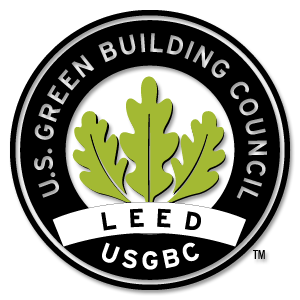Contributing to LEED© Certification
 Contributing LEED© Certification
Contributing LEED© CertificationContributing to LEED© Certification
Playground safety surfacing systems are designed to meet stringent criteria required to earn points under 2 out of 6 categories of the U.S. Green Building Council’s LEED® (Leadership in Energy and Environmental Design) rating system. This rating system is utilized as a design guideline and certification tool for architects and designers seeking to develop high-performance, sustainable buildings. Based on these criteria, playground products can assist architects and designers in obtaining up to 5 points toward LEED certification. For more detail and further information regarding the matter, download the LEED Documentation.
Rating Systems
The Leadership in Energy and Environmental Design (LEED) Green Building Rating System© is a voluntary, consensus-based nationally standardized program for developing high-performance, sustainable buildings. It is sponsored by the US Green Building Council. The following are the standards that are currently available or will be available soon by the Leadership in Energy and Environmental Design (LEED):
- New commercial construction and major renovation projects
- Existing building operations and maintenance
- Commercial interiors projects
- Core and shell development projects
- Homes
- Neighborhood Development
- Guidelines for multiple buildings and on-campus building projects
- LEED for schools
- LEED for retail
LEED was created to:
- Define “green building” by establishing a common standard or measurement
- Promote integrated, whole-building design practices
- Recognize environmental leadership in the building industry
- Stimulate green competition
- Raise consumer awareness of green building benefits
- Transform the building market
The Building Rating System LEED Green provides all the framework for design, construction, and operation of high performance green buildings. With solid standards in scientific background, LEED emphasizes on the five key areas of human and environmental health: sustainable site development, water savings, energy efficiency, materials selection, and indoor environmental quality. The LEED program includes training workshops and a professional accreditation program to promote and emphasize green building expertise across the building industry.
